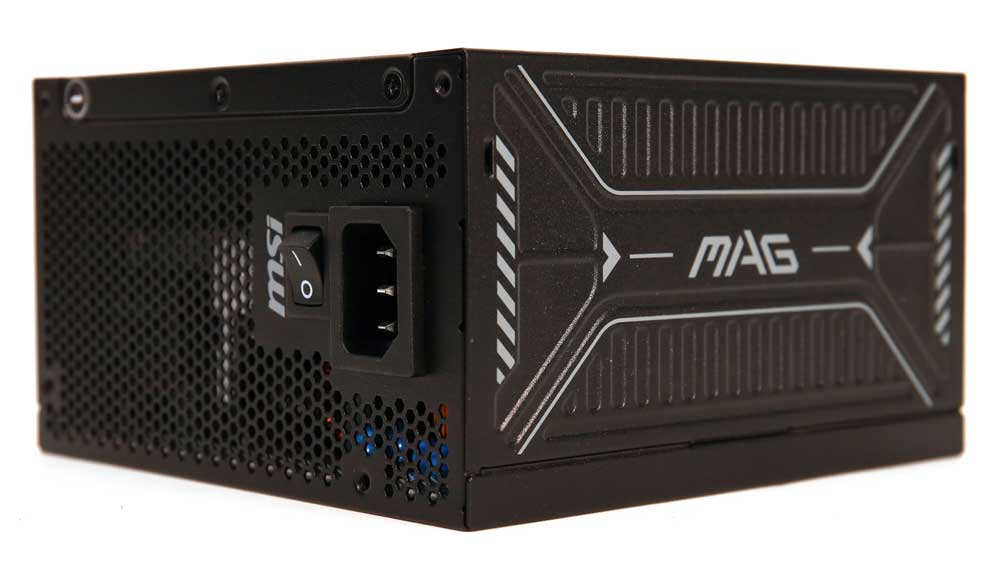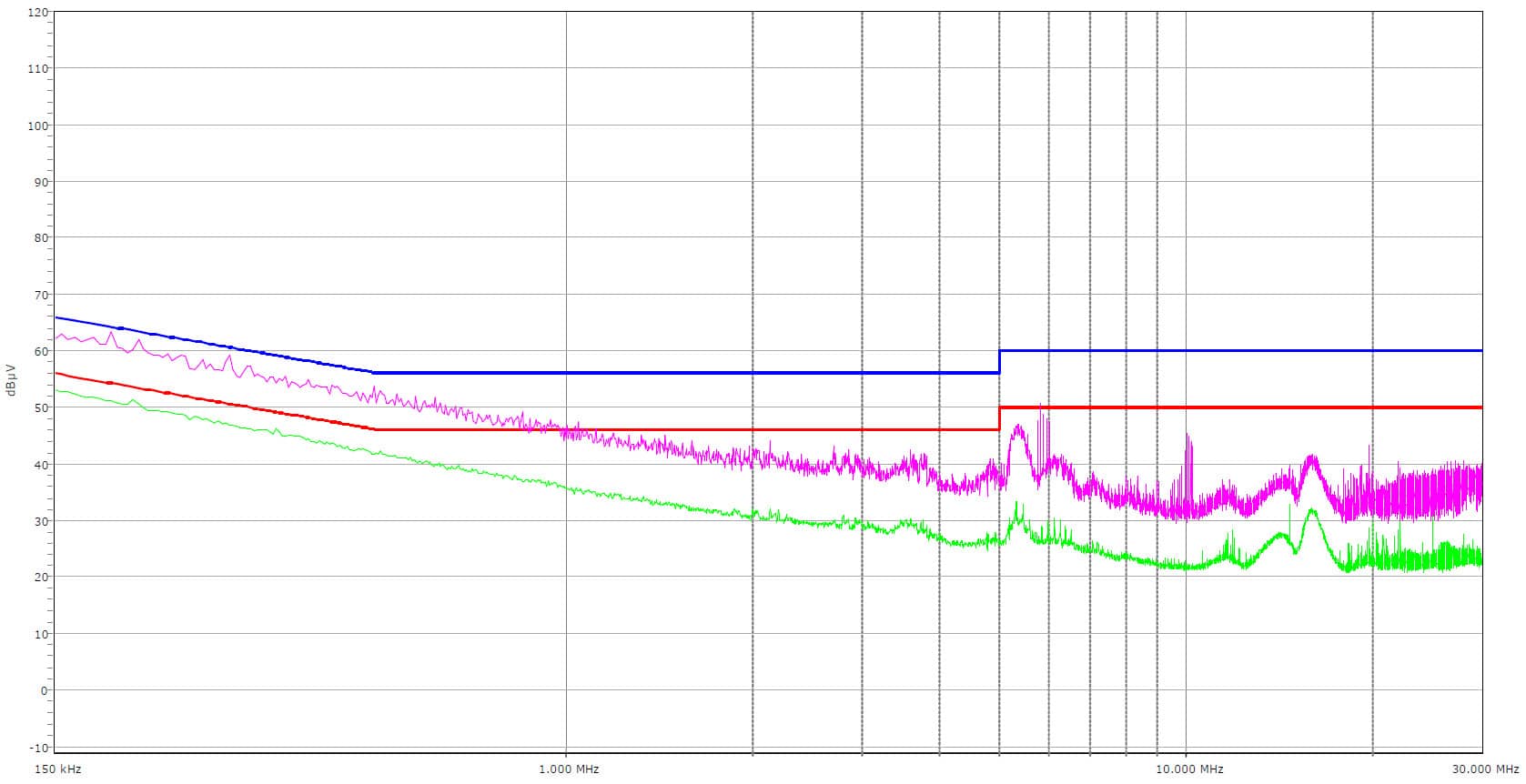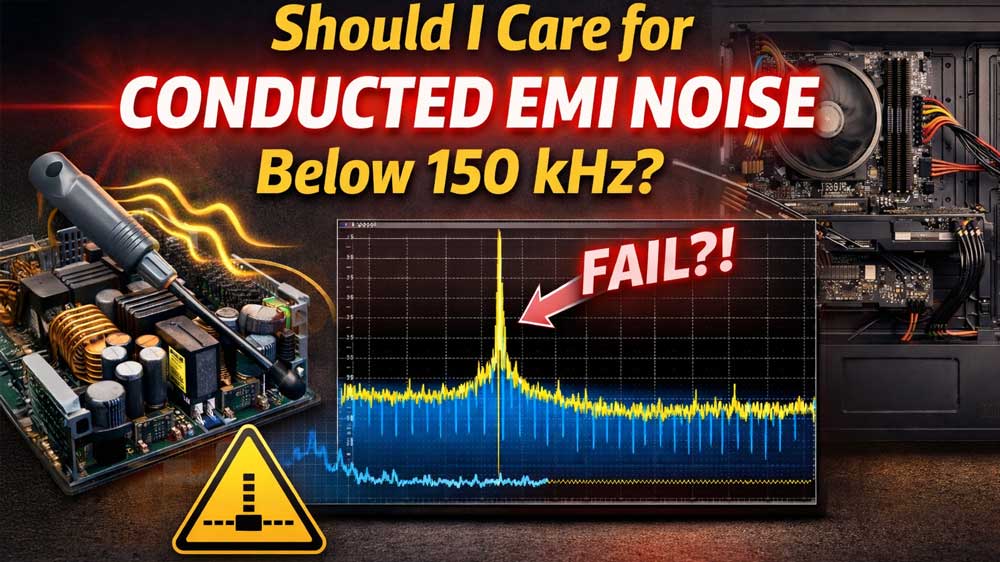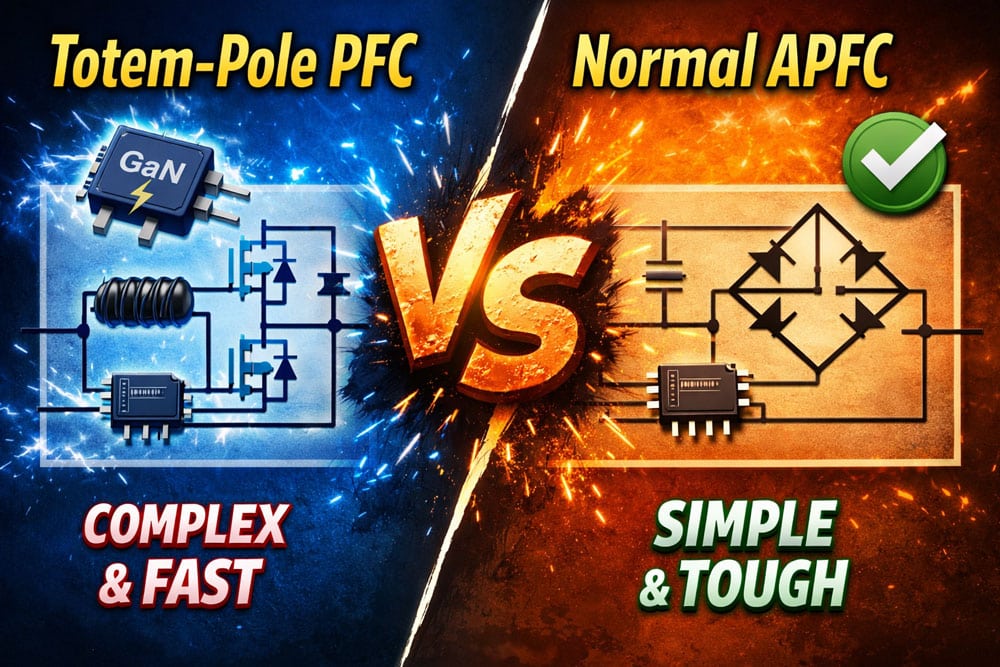Protection Features & EMI
| OCP (Normal @ 30.6°C) | 12V: 106.40A (127.73%), 12.050V 5V: 30.8A (154.00%), 5.014V 3.3V: 29.6A (148.00%), 3.275V 5VSB: 5.5A (183.33%), 4.971V |
| OCP (Hot @ 44.3°C) | 12V: 97.40A (116.93%), 12.061V 5V: 31A (155.00%), 5.018V 3.3V: 31A (155.00%), 3.278V 5VSB: 5.5A (183.33%), 4.979V |
| OPP (Normal @ 31.8°C) | 1271.09W (127.11%) |
| OPP (Hot @ 42.3°C) | 1253.59W (125.36%) |
| OTP | ✓ (110°C @ Heat Sink) |
| SCP | 12V to Earth: ✓ 5V to Earth: ✓ 3.3V to Earth: ✓ 5VSB to Earth: ✓ -12V to Earth: ✓ |
| PWR_OK | Proper Operation |
| UVP (Full Load @ 90V) | ✓ |
| UVP (Damage @ 80V) | ✓ |
| Conducted Emissions EN55032 & CISPR 32 | ✓ |
| NLO | ✓ |
| Fan Failure Protection | ✗ |
| SIP | Surge: MOV Inrush: NTC & Bypass Relay |
The 12V rail’s OCP triggering points are set correctly, with a notable difference between normal and hot conditions. This is not the case for the minor rails, though, which have highly set OCP triggering points. To make matters worse, the hot triggering points are higher than the ones at normal operating conditions. This is not ideal, as the PSU is stressed significantly under high temperatures; therefore, the OCP should be set lower.
The over power protection’s triggering points are set below 130%, but the difference between normal and high temperatures is low, at just 1.75%. The rest of the essential protection features are present, except for fan failure, which is not typically found in most desktop power supplies (unfortunately).
EMC Pre-Compliance at a Glance
Every electronics device, including PSUs, can be an EMI source, which, depending on the amount of EMI emitted, can affect the proper operation of nearby devices. EMI can, in some extreme cases, even render them unusable. Some standards have been established to minimize electromagnetic interference (EMI) noise. The corresponding standards for IT (Information Technology) products are CISPR 32 and its derivative, EN 55032, which applies to products sold in the EU. In the EU, every product bearing the “CE” marking must comply with the EN 55032 standard. CISPR 32 and EN 55032 standards categorize devices into two classes: A and B. Class B equipment is intended for domestic environments. Hence, its permitted EMI emissions are significantly lower than those of A-class devices.
Our equipment for EMI readings:
- Rohde & Schwarz FPC1500 (loaded with all options)
- Tekbox TBLC08 LISN
- Tekbox TBFL1 transient limiter
- Tekbox EMCview software
| CISPR 32 / EN55032 Limits | ||
| CISRP 32 / EN 55032 Class A Conducted EMI Limit | ||
| Frequency of Emission (MHz) | Conducted Limit (dBuV) | |
| Quasi-peak | Average | |
| 0.15 – 0.50 | 79 | 66 |
| 0.50 – 30.0 | 73 | 60 |
| CISPR 32 / EN 55032 Class B Conducted EMI Limit | ||
| Frequency of Emission (MHz) | Conducted Limit (dBuV) | |
| Quasi-peak | Average | |
| 0.15 – 0.50 | 66 – 56 | 56 – 46 |
| 0.50 – 5.00 | 56 | 46 |
| 5.00 – 30.00 | 60 | 50 |
| CISRP 32 / EN 55032 Class A 10-Meter Radiated EMI Limit | ||
| Frequency of Emission (MHz) | Field Strength Limit (dBuV/m) | |
| 30 – 88 | 39 | |
| 88 – 216 | 43.5 | |
| 216 – 960 | 46.5 | |
| > 960 | 49.5 | |
| CISRP 32 / EN 55032 Class B 3-Meter Radiated EMI Limit | ||
| Frequency of Emission (MHz) | Field Strength Limit (dBuV/m) | |
| 30 – 88 | 40 | |
| 88 – 216 | 43.5 | |
| 216 – 960 | 46.0 | |
| > 960 | 54.0 | |
Please note that the ATX spec allows a 4 dB margin for conducted and radiated emissions. This means that if a PSU exceeds the limits but stays within the 4 dB margin, it meets the corresponding ATX spec requirement (8.1 Emissions).
EMI Results
The PSU’s conducted emissions are below the respective limits at both the average and peak EMI detectors.




I just saw this one in Amazon US for $375.
Hello Aris i had 160-170$ budget for my 1000W ATX 3.1, i’ve been researched on there are 5 options : MSI A1000GS, NZXT C1000 & Asrock PG-1000G, XPG Cybercore II, Montech Titan Gold, which is better options in terms of safety between all of them ?
All are good and safe units.